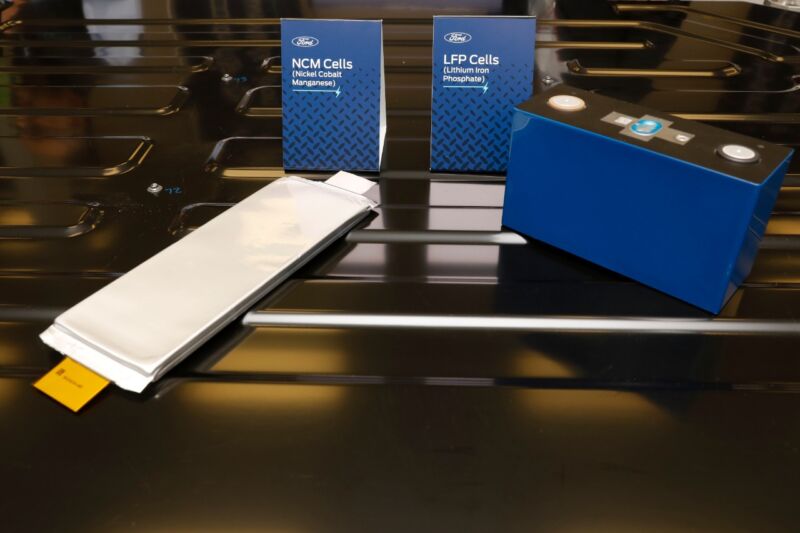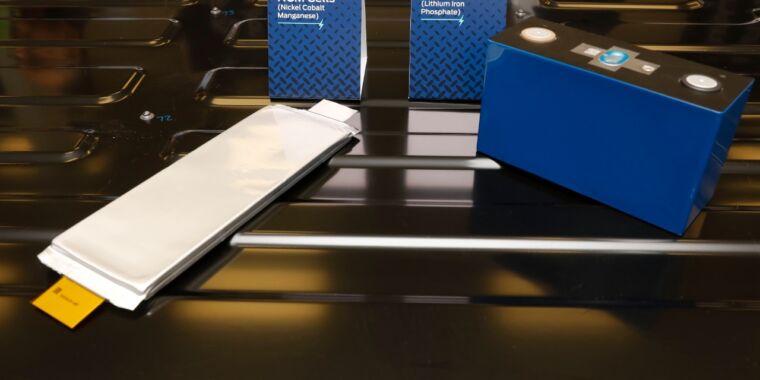lithium iron phosphate —
The plant will employ 2,500 workers when it opens in 2026.

Enlarge / On the left, a nickel cobalt manganese battery cell; on the right, a lithium iron phosphate cell.
Ford
The US is getting yet another new electric vehicle battery factory. On Monday afternoon, Ford announced that it will spend $3.5 billion to build a new plant in Marshall, Michigan. Significantly, this new site will make lithium iron phosphate (also known as LFP) cells, which are both cheaper and longer-lived than lithium-ion chemistries like nickel cobalt manganese (NCM), albeit at the cost of some energy density and cold weather performance.
“Ford’s electric vehicle lineup has generated huge demand. To get as many Ford EVs to customers as possible, we’re the first automaker to commit to build both NCM and LFP batteries in the United States. We’re delivering on our commitments as we scale LFP and NCM batteries and thousands, and soon millions, of customers will begin to reap the benefits of Ford EVs with cutting-edge, durable battery technologies that are growing more affordable over time,” said Jim Farley, Ford president and CEO.
Although LFP cells were originally invented in North America, patent licensing deals have meant that, until now, they’ve mostly been the preserve of Chinese-market EVs. In this case, Ford has signed a licensing agreement with Chinese battery firm CATL, allowing it to make LFP cells.
In fact, Ford had already worked out a deal for CATL to begin supplying the automaker with LFP cells, which will appear as an option in the Mustang Mach-E later this year and then the F-150 Lightning pickup in 2024.
But once BlueOval Battery Park Michigan—the name of the new plant—gets up and running in 2026, its packs should more easily qualify for clean vehicle tax credits that are tied to domestic content and manufacturing of an EV’s battery pack. Annual production at the new site is planned to be 35 GWh per year, enough for 400,000 BEVs, says Ford.
This won’t be Ford’s only battery plant. In 2021 it formed a partnership with SK Innovation to build three battery factories in Tennessee and Kentucky for $11.4 billion. Each BlueOvalSK plant is designed with an output of 43 GWh per year.










